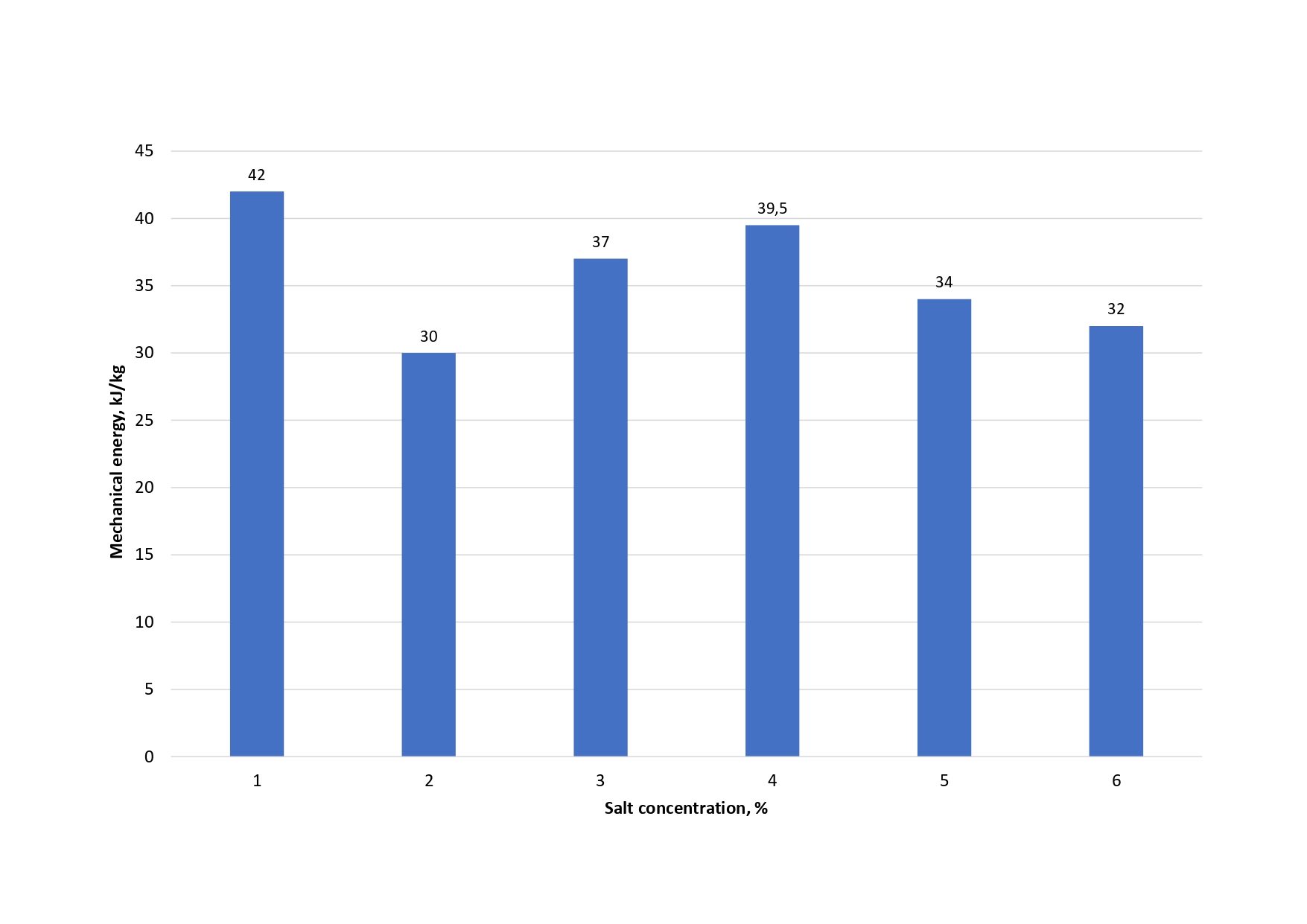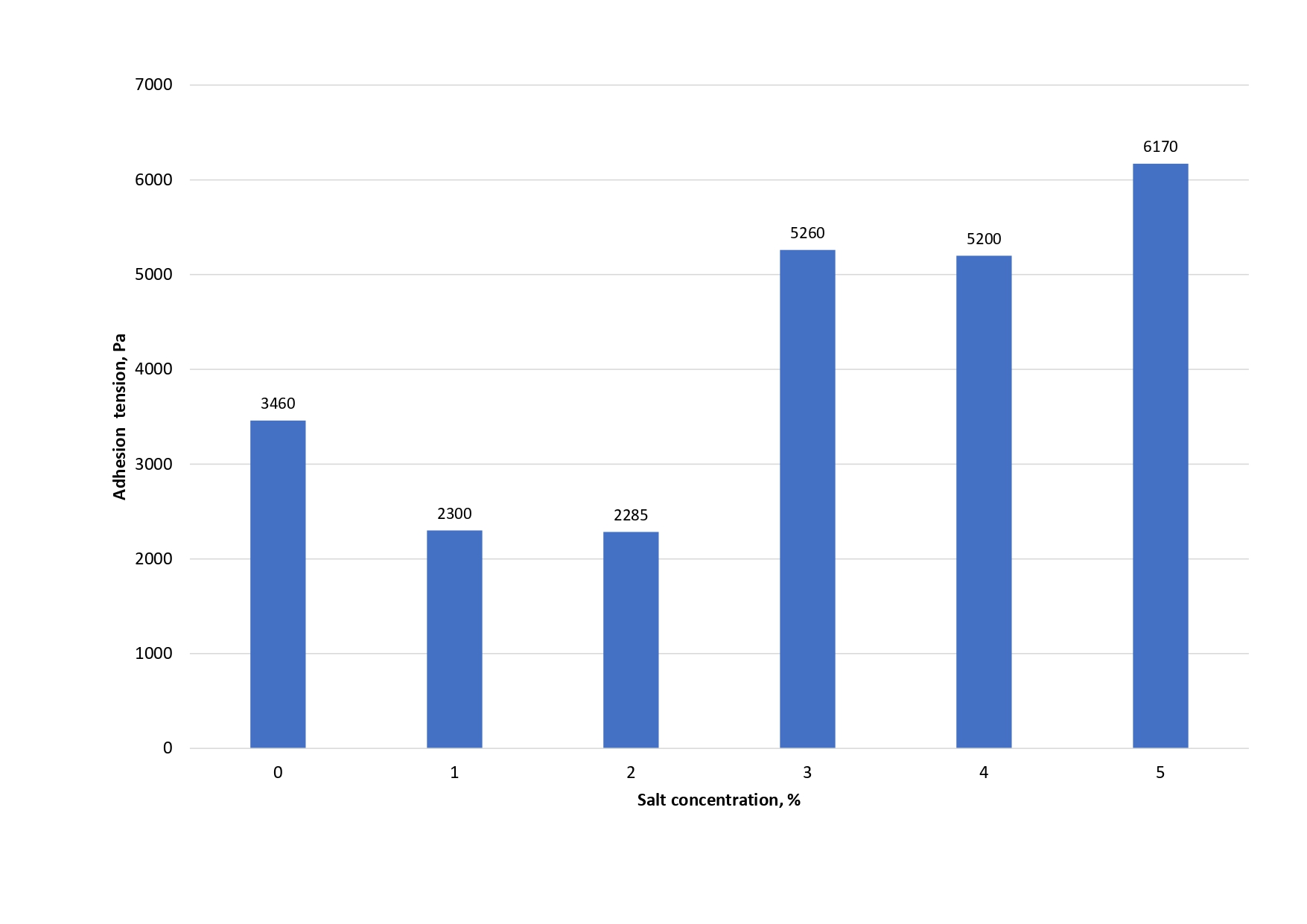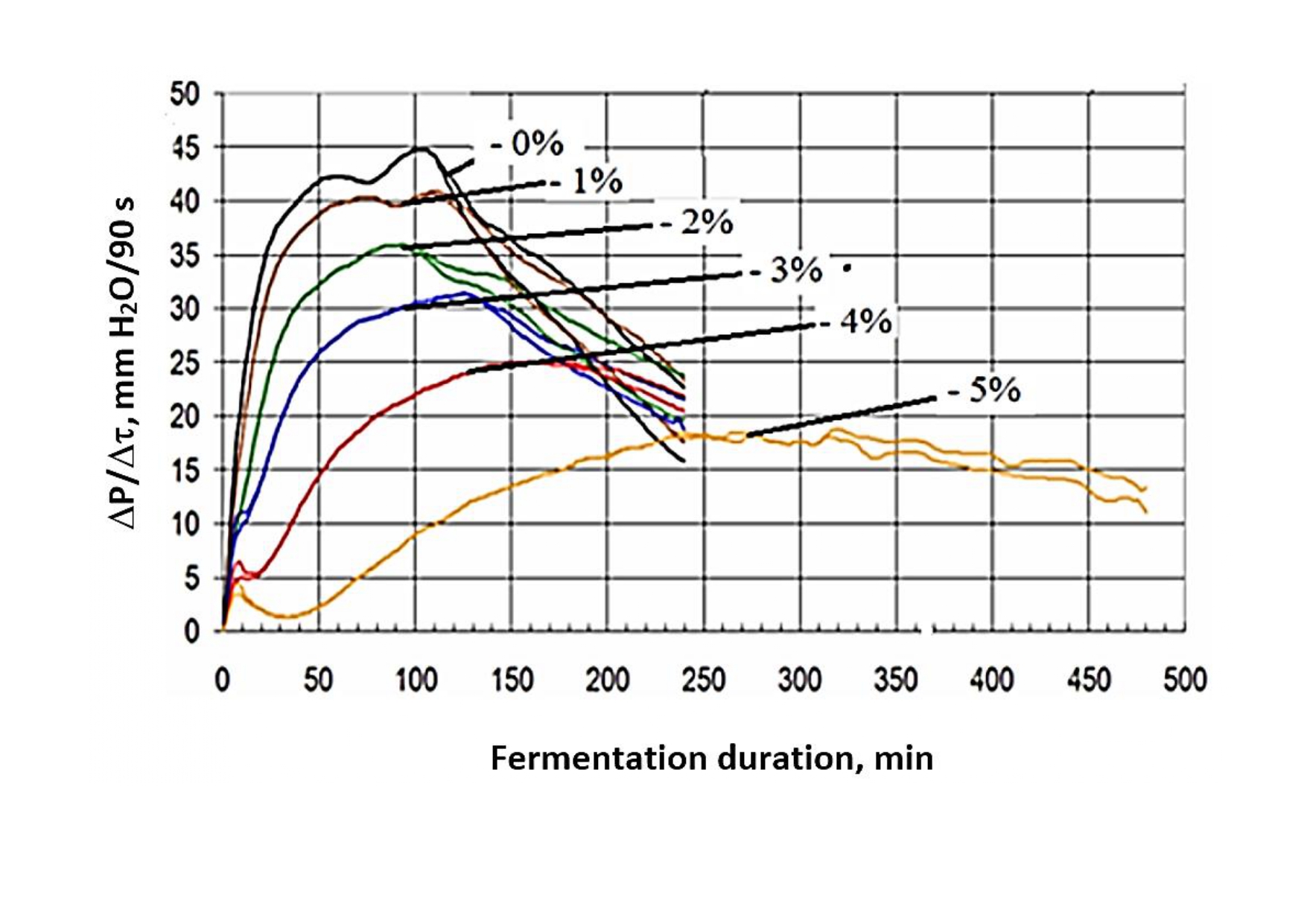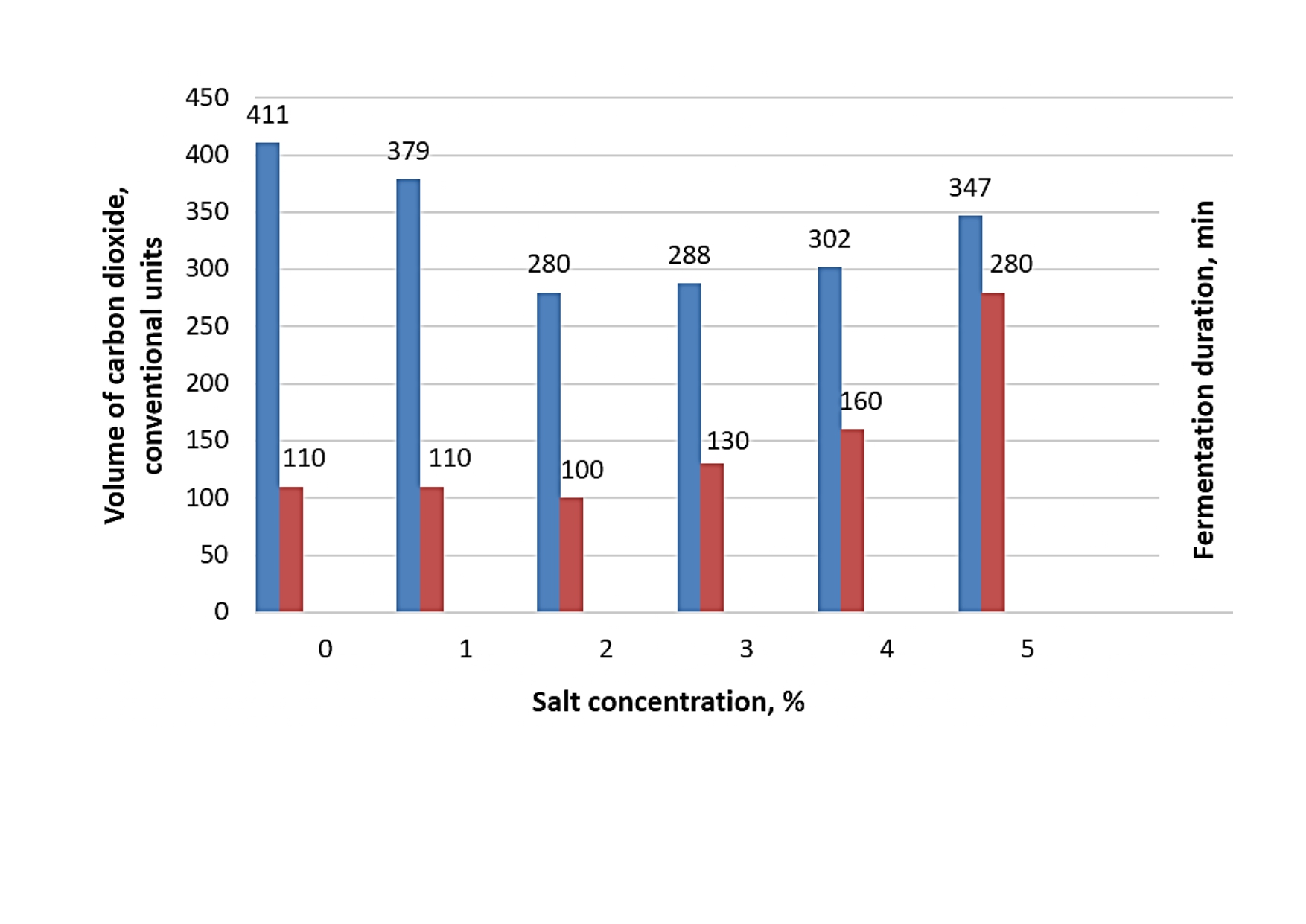The Effect of the Dosage of Table Salt on the Change of Rheological Properties of Wheat Dough
The Effect of the Dosage of Table Salt on the Change of Rheological Properties of Wheat Dough
Abstract
Doughing is one of the crucial links in the technological process of bread and bakery products production. The properties of the dough ready for cutting largely predetermine its further state during molding, proofing, and, in this regard, the quality of the finished product. Important factors influencing the change in the rheological properties of the dough are the baking properties of flour, the recipe of the dough and the method of its preparation.
To the most important technological factors determining the rheological behavior of wheat dough after kneading, the dosage of prescription components is belonged to. Based on the conducted studies, the effect of the dosage of table salt on the process of forming the structure of the dough. It was found that kneading wheat dough without table salt requires more mechanical energy than with its introduction. Based on the analysis of rheological characteristics of dough and bread crumb, as well as organoleptic and physico-chemical indicators of bread quality, the optimal dosage of table salt is the dosage within 1.5-2.0%.
1. Introduction
Bakery products, being a priority product in the structure of the population's nutrition, can become a real tool for replenishing micronutrients missing to a person or be a source of biologically active substances of directed action , .
Definitely, the introduction of food ingredients into the recipe of bakery products should not only increase their nutritional and biological value, but also provide the necessary consumer properties , , . For this reason, when developing enriched bakery products, it is necessary to monitor the effect of newly introduced additives on the baking properties of flour, technological properties of dough, fermentation processes, etc.
In order to be able to judge the effect of dosages of prescription components on the rheological properties , , , of the dough after kneading, it is necessary to prepare the dough under the same conditions – with the same consistency when kneading the dough and fermenting it until readiness and confirm the selected optimal mode of dough preparation with the best quality of the resulting bread.
The structure of bread is very labile and changes over time by biochemical, as well as physico-chemical processes (dissolution, swelling); it is also quite easily changed by mechanical, thermal processing processes. When storing bread, the structure of its crumb and crust also changes due to the physical and chemical processes of syneresis of protein-starch jelly, recrystallization of polymers and low-molecular grains and moisture loss (drying). All of the above puts forward as the main task of the rational use of grain and flour in baking and bread trade, the development and implementation of scientifically sound methods for managing the structural and mechanical properties of dough and bread products.
In accordance with the aim of the study, the effect of the dosage of table salt on the change in rheological and biotechnological parameters of wheat dough and rheological indicators of the quality of bakery products was determined.
The effect of table salt on the rheological characteristics of wheat dough is mainly due to its dosage. Since the technology of bread and bakery products refers to biotechnologies, it is necessary to pay attention to the biotechnological properties of the dough – the intensity of carbon dioxide formation and its amount by the time the dough is ready during fermentation.
2. Materials and Methods
The study was carried out by using the following three instruments for measuring the qualities of the wheat dough:
- the «Farinograf E» which determines the changes in the consistency of dough during kneading, setting the time it is ready for baking, and adjusting the amount of mechanical energy expended during tests
, , ;- the «Strukturometr ST-2M» which determines the complex rheology of the wheat dough after mixing;
- the «Rheofermentometre F3» – determination of the rate of change in the pressure of the carbon dioxide formed during fermentation of the dough was controlled by volumetric method.
3. Results and Discussion
When determining the effect of the dosage of table salt on the rheological properties of the dough after kneading, its consistency at the time of readiness was provided equal to 640 EF.
The dough was prepared by direct way with different dosages of table salt (from 0 to 5%, in increments of 1%) according to the recipe of the sliced loaf given in Table 1. After kneading the dough until ready, the amount of mechanical energy spent on forming the dough structure was calculated.
Table 1 - The recipe of the dough with different dosages of table salt
Name of raw materials | The amount of input raw materials (in % by weight of flour) |
Wheat flour, the highest grade | 100.00 |
Pressed baking yeast | 2.50 |
Table salt, food | 0-5.00 |
Granulated sugar | 4.00 |
Margarine | 3.00 |
Vegetable oil | 0.15 |
Water | According to the calculation, based on the consistency of the dough 640 EF |
Table 2 - Parameters of kneading wheat dough at different dosages of table salt
Dosage of salt, % | 0 | 1 | 2 | 3 | 4 | 5 |
Amount of water per kneading, ml | 169.0 | 160.0 | 159.0 | 158.0 | 156.0 | 154.0 |
Humidity of dough, % | 43.3 | 43.0 | 42.6 | 42.4 | 43.3 | 42.1 |
Water-absorbent capacity of flour, % | 57.3 | 57.0 | 56.7 | 56.7 | 56.5 | 56.2 |
The duration of the kneading, s | 120.0 | 125.0 | 135.0 | 140.0 | 147.0 | 150.0 |
Rheological characteristics of wheat dough after kneading (Table. 3) was determined by using the devices «Rheotest 2.1» and «Structrometer ST-2M». The biotechnological properties of the dough were evaluated using the «Rheofermentometer» device.
Table 3 - Change of rheological characteristics of wheat dough depending on the dosage of table salt
Name of rheological characteristics | Rheological characteristics of wheat dough | |||||
Dosage of table salt, % | ||||||
0 | 1 | 2 | 3 | 4 | 5 | |
The proportion of rapid stress relaxation | 0.52 | 0.42 | 0.55 | 0.45 | 0.56 | 0.59 |
The proportion of slow stress relaxation | 0.29 | 0.30 | 0.25 | 0.25 | 0.26 | 0.24 |
Percentage of residual voltage | 0.19 | 0.28 | 0.20 | 0.30 | 0.18 | 0.17 |
The speed of instantaneous stress relaxation, s-1 | 0.889 | 1.537 | 0.897 | 0.666 | 0.961 | 0.998 |
The speed of long-term stress relaxation, s-1 | 0.055 | 0.180 | 0.049 | 0.043 | 0.040 | 0.035 |
The speed of average stress relaxation, s-1 | 0.47 | 0.85 | 0.46 | 0.35 | 0.51 | 0.52 |
Effective viscosity, Pa∙s | 4563 | 3135 | 3634 | 6442 | 6200 | 6935 |

Figure 1 - The change in the amount of mechanical energy spent on the formation of the structure of wheat dough at different dosages of table salt
When studying the effect of table salt on changes in rheological criteria such as relative deformation and stress relaxation rate, it was found that the relative deformation of the test with a dosage of table salt 2% is 0.76, and the stress relaxation rate index – 0.46 с-1. This can be explained by the fact that the process of optimizing the kneading of wheat dough with different dosages of salt was focused only on establishing the optimal duration of kneading and did not include determining the optimal rotation speed of the kneading parts of the kneading machine. As is known, due to the rotation frequency of kneading parts, it is possible to provide the necessary mode of plasticization of wheat dough.

Figure 2 - Change in the adhesive tension of wheat dough depending on the dosage of table salt
From Fig. 2 it can be seen that when adding table salt in an amount of 1-2 %, the dough after kneading had the lowest value of adhesive tension.
Before carrying out experimental laboratory baking for each dosage of salt on the device «Rheofermentometer», the optimal duration of fermentation of wheat dough was determined by the rate of pressure change of the resulting carbon dioxide (kinetic and dynamic curves of this process are shown in Fig. 3 and 4).

Figure 3 - The effect of the duration of fermentation of wheat dough on the rate of change in the pressure of carbon dioxide formed at different dosages of table salt

Figure 4 - The change in the amount of carbon dioxide (VCO2) formed in 5 hours and the change in the optimal duration of fermentation of the dough depending on the dosage of table salt
It was determined that as the dosage of table salt introduced into the dough increases, the speed of change in carbon dioxide pressure during fermentation of wheat dough decreases. The slowing down of fermentation is caused by osmotic pressure, causing plasmolysis of yeast cells.
According to the obtained curves of the rate of change in the amount of the formed, carbon dioxide the optimal duration of fermentation of wheat dough was determined – the maximum on the curve corresponds to the optimal duration of fermentation.
Analysis of the dynamics of changes in the amount of carbon dioxide (VCO2) and optimal duration of fermentation of the dough (Fig. 4) shows that when adding table salt to wheat dough in the range from 0 to 2 % by weight of flour, the amount of carbon dioxide formed during fermentation decreases from 411 to 280 cu, and the fermentation time of the dough until ready remains practically at the same level. With a further increase in the dosage of salt to 5 %, there is a significant increase in the duration of fermentation of the dough until ready, with a slight increase in the amount of carbon dioxide formed against this background.
A special place among the physico-chemical indicators of bread crumb is occupied by rheological characteristics, since they are the most operational parameters and allow an objective and fairly accurate assessment of the state of the texture of finished products.
The obtained experimental data are shown in Table 4.
Table 4 - The effect of the dosage of table salt on the general, plastic and elastic deformation of bread crumb
The name of the bread quality indicator | The amount of table salt introduced, % | |||||
0 | 1 | 2 | 3 | 4 | 5 | |
Total deformation, mm | 4.68 | 12.49 | 3.35 | 3.13 | 4.41 | 6.07 |
Plastic deformation, mm | 2.09 | 7.1 | 1.25 | 1.02 | 1.77 | 2.09 |
Elastic deformation, mm | 2.59 | 5.39 | 2.1 | 2.11 | 2.64 | 3.98 |
The obtained results showed that the dosage of salt affected the overall, elastic and plastic deformation of the bread crumb. It was found that at a dosage of salt of 1% by weight of flour, the bread crumb has the maximum value of elastic-plastic deformation.
Next, the relaxation curves of mechanical tensions in the bread crumb sample were removed after it was loaded with a cylindrical indenter. The obtained rheological characteristics (Table 5), are represented themselves the texture profile of the crumb of a bakery product.
Table 5 - Rheological parameters of bread crumb
Name of rheological characteristics | The value of the rheological characteristics of the crumb when adding salt, % | |||||
0 | 1 | 2 | 3 | 4 | 5 | |
The period of prolonged relaxation, s | 31.0307 | 33.6657 | 28.7669 | 50.8265 | 30.9463 | 31.6531 |
Modulus of elasticity, Pa | 2335 | 3325 | 4857 | 3253 | 4157 | 4608 |
Modulus of elasticity, Pa | 1355 | 2015 | 1974 | 2023 | 2327 | 3076 |
Modulus of elasticity, Pa | 4847 | 6477 | 6409 | 5308 | 7266 | 7059 |
Dynamic viscosity coefficient, Pa∙s | 3865 | 6347 | 6317 | 6403 | 7117 | 10083 |
Dynamic viscosity coefficient, Pa∙s | 42047 | 67847 | 56772 | 102846 | 72006 | 97366 |
The rate of instantaneous stress relaxation, s-1 | 0.604 | 0.524 | 0.769 | 0.508 | 0.584 | 0.457 |
The rate of long-term stress relaxation, s-1 | 0.032 | 0.030 | 0.035 | 0.020 | 0.032 | 0.032 |
When studying the effect of table salt on the change in rheological criteria and relative deformation and stress relaxation rate of crumb, it was determined that the relative deformation of bread crumb with the dosage of table salt of 2% is relative deformation 0.37, and the stress relaxation rate – 0.40 s-1.
4. Conclusion
Based on the conducted studies, the effect of the dosage of table salt on the process of forming the structure of the dough, controlled by the amount of mechanical energy consumed during kneading, has been established. It was found that kneading wheat dough without table salt requires more mechanical energy than with its introduction. At the same time, table salt shows its properties as a structure-forming agent at dosages of 1.0-1.5%.
The influence of this prescription component on the kinetics of the dough kneading operation and its fermentation process has been established. A trial laboratory baking of a bakery product allowed us to establish that the crumb of finished products using a dosage of 2.0% table salt had the highest value of the elastic modulus E1, Pa and less elastic deformation of the crumb.
Thus, based on the analysis of rheological characteristics of dough and bread crumb, as well as organoleptic and physico-chemical indicators of bread quality, the optimal dosage of table salt is the dosage within 1.5-2.0%.
